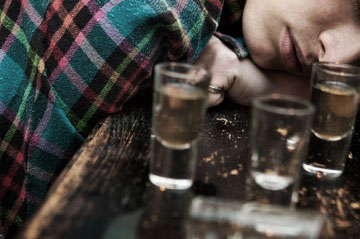Alcohol Use Disorders
Misconceptions about all types of medical treatments abound. The internet, folk knowledge, and the general population’s unawareness of scientific advances can be a deterrent to understanding real changes in medicine. This is especially true in addiction medicine. Our Alcohol Use Disorder Programs are founded on the natural principles of the body and modern neuro-biological science so you can overcome what is basically a health imbalance in the way you want to address it.

HorsePlay helps children-at-risk for alcoholism though our Equine Assisted Therapy program, HorsePlay. In the European Union, As many as 7.7 million children in the European Union are living in families suffering from the effects of alcohol. This greatly increases their chance of being alcohol-dependent later in life.
Alco-Ed Statistics show that the general population, even those suffering with alcohol use disorders, know little about alcohol and its harmful effects. CETF provides short videos and other educational sources that change lives. Two Examples:
(1) Europeans are more likely to give children alcohol with the belief they will get “used to it”. Nothing is farther from the truth: The earlier a person starts drinking, the greater the risk. A study of over 400,000 adults indicated that among those who began drinking before age 15, nearly half had become alcohol dependent by the age 21. By contrast, only 9% of people who began drinking after the age of 21 developed an alcohol use disorder.
(2) The average Maltese drinker has a 21% increased risk of developing colorectal cancer or other digestive cancers. Our research shows that as many as 90% of Maltese are unaware on the link between alcohol and cancer.
(3) Most Maltese heavy-drinkers are unaware of the relationship with alcohol and weight gain. Malta not only has the worst alcohol problem in the EU but also the highest percentage of obese and overweight individuals in Europe.
- The average male Maltese heavy drinker (15 drinks per week) will consume at least 79, 862 empty calories which result in an average weight gain of 10.3 kg (22.8 pounds).
- In one year, the average female Maltese heavy drinker will consume at least 43,942 empty calories which result in an average weight gain of 5.56 kg (10.6 pounds).
- 29.9% of Maltese residents are obese.
- 40% of 15- year old Maltese residents are overweight.
Rethinking Binge-Drinking Rethinking Binge Drinking helps people of all ages understand the physiological reason they have unusual cravings for excessive alcohol and gives them a way to change. Malta’s alcohol problem is horrible among all age groups, but the he young adult group (aged 18-24) is the population group most at risk especially for binge-drinking:
- 50 % of Maltese 15–16-year-olds report binge drinking.
- Teenage girls in Malta are some of the biggest binge-drinkers in Europe.
- 27.9% of Maltese teenage girls admitted to having been drunk at least twice. That is more than double the number of Italian teenage girls.
- Teenage girls in Malta are more likely to drink heavily than boys.
- Malta ranks 2nd among 36 countries in binge-drinking.
- Malta ranks 5th in the entire world in common binge drinking.
UNDERSTANDING ALCOHOL EQUIVALENCE
It is important to understand alcohol equivalence. Alcohol is alcohol and a drink is a drink. It is a myth that certain types of alcoholic beverages lead more quickly to intoxication. It does not matter if it is made from grains or fruits. The fermentation process makes no difference. All standard drinks of beer, wine and spirits all contain equivalent amounts of alcohol – about six-tenths of one ounce. A standard drink is defined as:
- A 12 – ounce bottle or can of beer.
- A 5- ounce glass of wine.
- A drink of 1½ ounce of 80 proof distilled spirits (either straight or mixed).
Rethinking Binge Drinking helps people of all ages understand the physiological reason they have unusual cravings for excessive alcohol and give them a way to change.
